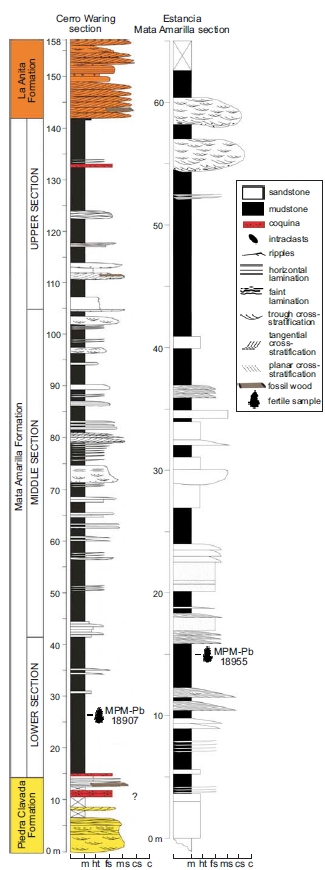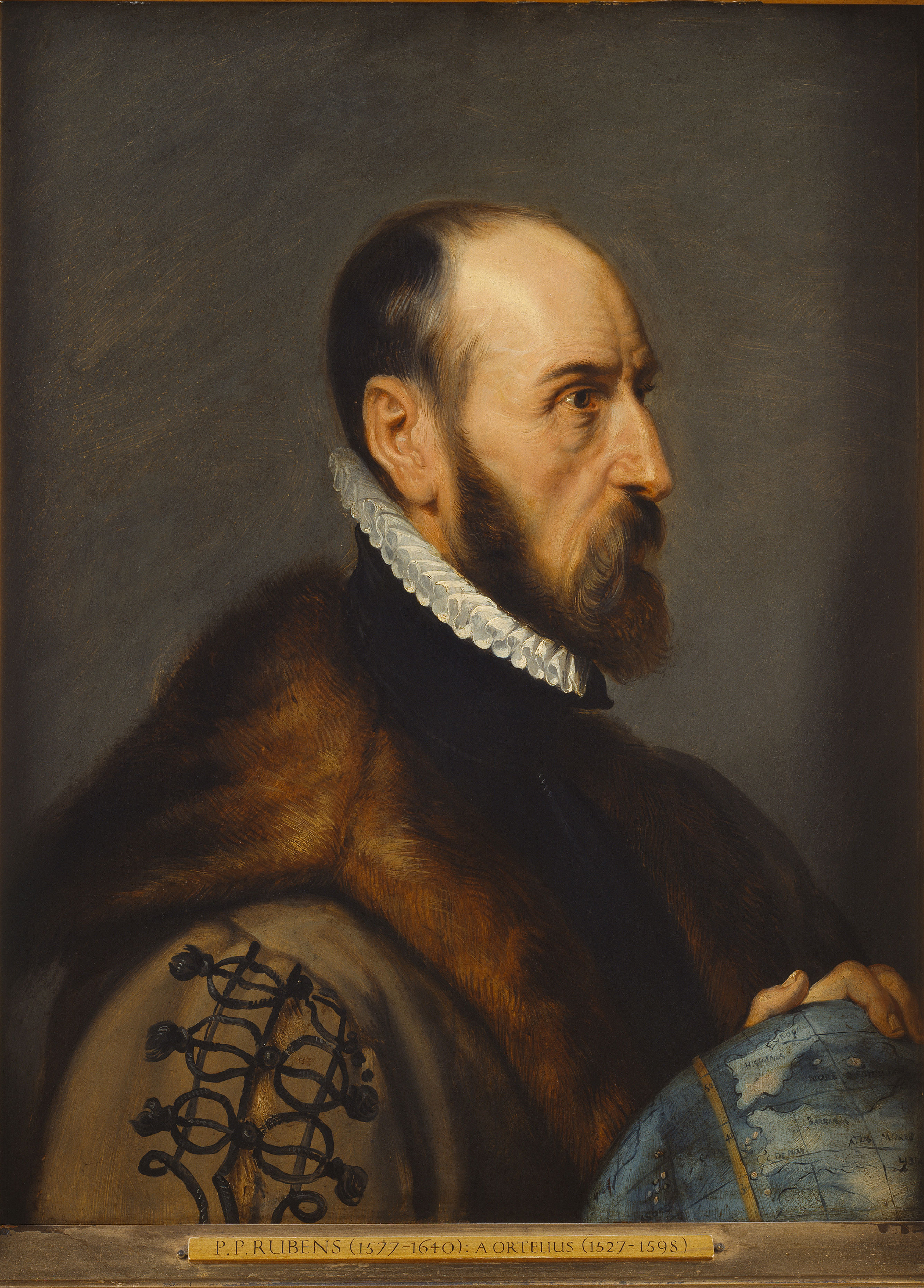|
Ausktribosphenida
Ausktribosphenidae is an extinct family of Australosphenida, australosphenidan mammals from the Early Cretaceous of Australia and mid Cretaceous of South America. Classification and taxonomy Ausktribosphenidae is closely related to monotremes and hence the two form the yinotherian clade Australosphenida. It includes two species, ''Ausktribosphenos nyktos'' and ''Bishops whitmorei'', both of which are known only from skull and jaw fragments. Morphology Like other Australosphenida, ausktribosphenids have tribosphenic molar (tooth), molars. Distribution Given that Ausktribosphenidae has been found in Early Cretaceous deposits in Australia, its occurrence has ramifications for knowledge of early monotreme paleobiogeography because Australia was connected only to Antarctica, and placentals originated in the northern hemisphere and were confined to it until continental drift formed land connections from North America to South America, from Asia to Africa and from Asia to India. The la ... [...More Info...] [...Related Items...] OR: [Wikipedia] [Google] [Baidu] |
Australosphenida
The Australosphenida are a clade of mammals, containing mammals with tribosphenic molars, known from the Jurassic to Mid-Cretaceous of Gondwana. They are thought to have acquired their tribosphenic molars independently from those of Tribosphenida. Fossils of australosphenidans have been found from the Jurassic of Madagascar and Argentina, and Cretaceous of Australia and Argentina. Monotremes have also been considered a part of this group in some studies, but this is disputed. Taxonomy This grouping includes the following taxa: *†Henosferidae, including the genera '' Ambondro'', ''Asfaltomylos'', and ''Henosferus'' from the Jurassic of Argentina and Madagascar. *†Ausktribosphenidae, including the genera ''Ausktribosphenos'', '' Bishops'' from the Lower Cretaceous of Australia and Mid-Cretaceous of Argentina *†''Vincelestes'', sometimes recovered as an australosphenidan (when not inversely considered a cladotherian).Nicholas Chimento, Frederico Agnolin, Agustin Martinelli, ... [...More Info...] [...Related Items...] OR: [Wikipedia] [Google] [Baidu] |
Ausktribosphenos
''Ausktribosphenos'' is an extinct genus of mammals from Early Cretaceous of Australia. The only recorded species, ''Ausktribosphenos nyktos'', was found on Flat Rocks, Victoria Victoria most commonly refers to: * Victoria (Australia), a state of the Commonwealth of Australia * Victoria, British Columbia, provincial capital of British Columbia, Canada * Victoria (mythology), Roman goddess of Victory * Victoria, Seychelle .... References Cretaceous mammals of Australia Australosphenida Fossil taxa described in 1997 Prehistoric mammal genera {{cretaceous-mammal-stub ... [...More Info...] [...Related Items...] OR: [Wikipedia] [Google] [Baidu] |
Ausktribosphenos Nyktos
''Ausktribosphenos'' is an extinct genus of mammals from Early Cretaceous of Australia. The only recorded species, ''Ausktribosphenos nyktos'', was found on Flat Rocks, Victoria Victoria most commonly refers to: * Victoria (Australia), a state of the Commonwealth of Australia * Victoria, British Columbia, provincial capital of British Columbia, Canada * Victoria (mythology), Roman goddess of Victory * Victoria, Seychelle .... References Cretaceous mammals of Australia Australosphenida Fossil taxa described in 1997 Prehistoric mammal genera {{cretaceous-mammal-stub ... [...More Info...] [...Related Items...] OR: [Wikipedia] [Google] [Baidu] |
Mata Amarilla Formation
The Mata Amarilla Formation is a fossiliferous formation of the Austral Basin in southern Patagonia, Argentina. The formation consists of sediments deposited during the Middle Cenomanian, dated to 96.94 to 95.52 Ma. The middle section of the formation was previously considered to be the Pari Aike Formation. The Mata Amarilla Formation has provided many fossil vertebrates, among which dinosaurs, fish and turtles, as well as fossil insects, flora and molluscs. Age The middle section of the Mata Amarilla Formation has widely been regarded as Maastrichtian in age, but recent dating of a lava tuff layer shows that it dates back to 96.2 ± 0.7 Ma, during the Cenomanian.Varela et al., 2012 Description The Austral (or Magallanes) Basin, is located on the southwestern end of the South American Plate and it is bordered to the south by the Scotia Plate covering an area of approximately . In the studied area, the Austral Basin underwent three main tectonic stages: (i) a rift stage ... [...More Info...] [...Related Items...] OR: [Wikipedia] [Google] [Baidu] |
Early Cretaceous
The Early Cretaceous ( geochronological name) or the Lower Cretaceous (chronostratigraphic name), is the earlier or lower of the two major divisions of the Cretaceous. It is usually considered to stretch from 145 Ma to 100.5 Ma. Geology Proposals for the exact age of the Barremian-Aptian boundary ranged from 126 to 117 Ma until recently (as of 2019), but based on drillholes in Svalbard the defining early Aptian Oceanic Anoxic Event 1a (OAE1a) was carbon isotope dated to 123.1±0.3 Ma, limiting the possible range for the boundary to c. 122–121 Ma. There is a possible link between this anoxic event and a series of Early Cretaceous large igneous provinces (LIP). The Ontong Java-Manihiki-Hikurangi large igneous province, emplaced in the South Pacific at c. 120 Ma, is by far the largest LIP in Earth's history. The Ontong Java Plateau today covers an area of 1,860,000 km2. In the Indian Ocean another LIP began to form at c. 120 Ma, the Kerguelen P ... [...More Info...] [...Related Items...] OR: [Wikipedia] [Google] [Baidu] |
Bishops (mammal)
''Bishops'' is an extinct genus of mammals from Early Cretaceous of Australia. The only recorded species, ''Bishops whitmorei'', was found on Flat Rocks, Wonthaggi Formation, Victoria. The genus was named in honour of Dr Barry Bishop, the former Chairman of the Committee for Research and Exploration, National Geographic Society The National Geographic Society (NGS), headquartered in Washington, D.C., United States, is one of the largest non-profit scientific and educational organizations in the world. Founded in 1888, its interests include geography, archaeology, .... References Further reading * Rich, T. H.; Flannery, T. F.; Trusler, P.; Kool, L.; van Klaveren, N. A. & Vickers-Rich, P. 2001. "A second tribosphenic mammal from the Mesozoic of Australia." ''Records of the Queen Victoria Museum'' 110: 1–9. Cretaceous mammals of Australia Australosphenida Extinct mammals of Australia {{cretaceous-mammal-stub ... [...More Info...] [...Related Items...] OR: [Wikipedia] [Google] [Baidu] |
Monotremes
Monotremes () are prototherian mammals of the order Monotremata. They are one of the three groups of living mammals, along with placentals (Eutheria), and marsupials (Metatheria). Monotremes are typified by structural differences in their brains, jaws, digestive tract, reproductive tract, and other body parts, compared to the more common mammalian types. In addition, they lay eggs rather than bearing live young, but, like all mammals, the female monotremes nurse their young with milk. Monotremes have been considered members of Australosphenida, a clade that contains extinct mammals from the Jurassic and Cretaceous of Madagascar, South America, and Australia, though this is disputed. The only surviving examples of monotremes are all indigenous to Australia and New Guinea, although there is evidence that they were once more widespread, as ''Monotrematum'' is known from the Paleocene of South America. The extant monotreme species are the platypus and four species of echidnas. There ... [...More Info...] [...Related Items...] OR: [Wikipedia] [Google] [Baidu] |
Bishops Whitmorei
''Bishops'' is an extinct genus of mammals from Early Cretaceous of Australia. The only recorded species, ''Bishops whitmorei'', was found on Flat Rocks, Wonthaggi Formation, Victoria. The genus was named in honour of Dr Barry Bishop, the former Chairman of the Committee for Research and Exploration, National Geographic Society The National Geographic Society (NGS), headquartered in Washington, D.C., United States, is one of the largest non-profit scientific and educational organizations in the world. Founded in 1888, its interests include geography, archaeology, and .... References Further reading * Rich, T. H.; Flannery, T. F.; Trusler, P.; Kool, L.; van Klaveren, N. A. & Vickers-Rich, P. 2001. "A second tribosphenic mammal from the Mesozoic of Australia." ''Records of the Queen Victoria Museum'' 110: 1–9. Cretaceous mammals of Australia Australosphenida Extinct mammals of Australia {{cretaceous-mammal-stub ... [...More Info...] [...Related Items...] OR: [Wikipedia] [Google] [Baidu] |
Molar (tooth)
The molars or molar teeth are large, flat teeth at the back of the mouth. They are more developed in mammals. They are used primarily to grind food during chewing. The name ''molar'' derives from Latin, ''molaris dens'', meaning "millstone tooth", from ''mola'', millstone and ''dens'', tooth. Molars show a great deal of diversity in size and shape across mammal groups. The third molar of humans is sometimes vestigial. Human anatomy In humans, the molar teeth have either four or five cusps. Adult humans have 12 molars, in four groups of three at the back of the mouth. The third, rearmost molar in each group is called a wisdom tooth. It is the last tooth to appear, breaking through the front of the gum at about the age of 20, although this varies from individual to individual. Race can also affect the age at which this occurs, with statistical variations between groups. In some cases, it may not even erupt at all. The human mouth contains upper (maxillary) and lower (mandib ... [...More Info...] [...Related Items...] OR: [Wikipedia] [Google] [Baidu] |
Australia
Australia, officially the Commonwealth of Australia, is a Sovereign state, sovereign country comprising the mainland of the Australia (continent), Australian continent, the island of Tasmania, and numerous List of islands of Australia, smaller islands. With an area of , Australia is the largest country by area in Oceania and the world's List of countries and dependencies by area, sixth-largest country. Australia is the oldest, flattest, and driest inhabited continent, with the least fertile soils. It is a Megadiverse countries, megadiverse country, and its size gives it a wide variety of landscapes and climates, with Deserts of Australia, deserts in the centre, tropical Forests of Australia, rainforests in the north-east, and List of mountains in Australia, mountain ranges in the south-east. The ancestors of Aboriginal Australians began arriving from south east Asia approximately Early human migrations#Nearby Oceania, 65,000 years ago, during the Last Glacial Period, last i ... [...More Info...] [...Related Items...] OR: [Wikipedia] [Google] [Baidu] |
Continental Drift
Continental drift is the hypothesis that the Earth's continents have moved over geologic time relative to each other, thus appearing to have "drifted" across the ocean bed. The idea of continental drift has been subsumed into the science of plate tectonics, which studies the movement of the continents as they ride on plates of the Earth's lithosphere. The speculation that continents might have 'drifted' was first put forward by Abraham Ortelius in 1596. A pioneer of the modern view of mobilism was the Austrian geologist Otto Ampferer.Helmut W. Flügel: Die virtuelle Welt des Otto Ampferer und die Realität seiner Zeit'. In: Geo. Alp., Vol. 1, 2004. The concept was independently and more fully developed by Alfred Wegener in 1912, but the hypothesis was rejected by many for lack of any motive mechanism. The English geologist Arthur Holmes later proposed mantle convection for that mechanism. History Early history Abraham Ortelius , Theodor Christoph Lilienthal (1756), A ... [...More Info...] [...Related Items...] OR: [Wikipedia] [Google] [Baidu] |


